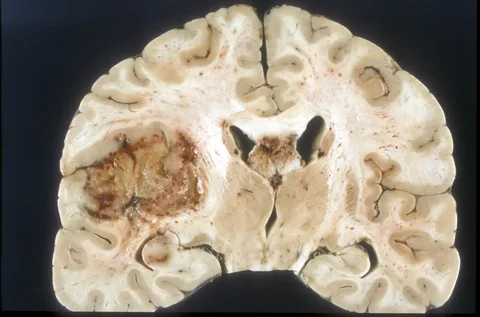Glioblastoma, a notoriously fatal form of brain cancer, claims the lives of over 95% of patients within five years of diagnosis. The disease’s aggressive nature and resistance to conventional treatments make it a significant challenge for medical professionals.
A groundbreaking study conducted by researchers from the Lee Kong Chian School of Medicine (LKCMedicine) at Nanyang Technological University (NTU) and the National Neuroscience Institute (NNI) in Singapore offers renewed hope for glioblastoma patients. Their findings, published in the journal Neuro-Oncology, could lead to more effective and targeted therapies for this deadly disease and potentially prevent its recurrence.
The research, titled “Dual p38MAPK and MEK inhibition disrupts adaptive chemoresistance in mesenchymal glioblastoma to temozolomide,” sheds light on the current treatment landscape for glioblastoma. The primary treatment approach involves using a chemotherapy drug called temozolomide (TMZ), which damages the DNA of cancer cells, inhibiting their ability to divide. However, glioblastoma’s inherent genetic heterogeneity, or the presence of diverse cell populations within the tumor, increases the likelihood that some cells will adapt and develop resistance to TMZ.
Moreover, the scarcity of effective treatment options for resistant glioblastoma is a significant concern. This is due in part to the blood-brain barrier (BBB), a protective membrane that regulates the passage of substances into the brain, making it challenging for many drugs to reach the affected areas.
The researchers’ innovative approach focuses on employing a dual therapy, targeting two key signaling pathways, p38MAPK and MEK, to disrupt the glioblastoma cells’ resistance to TMZ. By inhibiting these pathways, the researchers were able to enhance the effectiveness of TMZ and potentially prevent the cancer from recurring.
This promising discovery could pave the way for more precise and effective treatments for glioblastoma, ultimately improving patient outcomes and increasing the chances of survival beyond the current dismal prognosis.
*Note:
1. Source: Coherent Market Insights, Public sources, Desk research
2. We have leveraged AI tools to mine information and compile it




